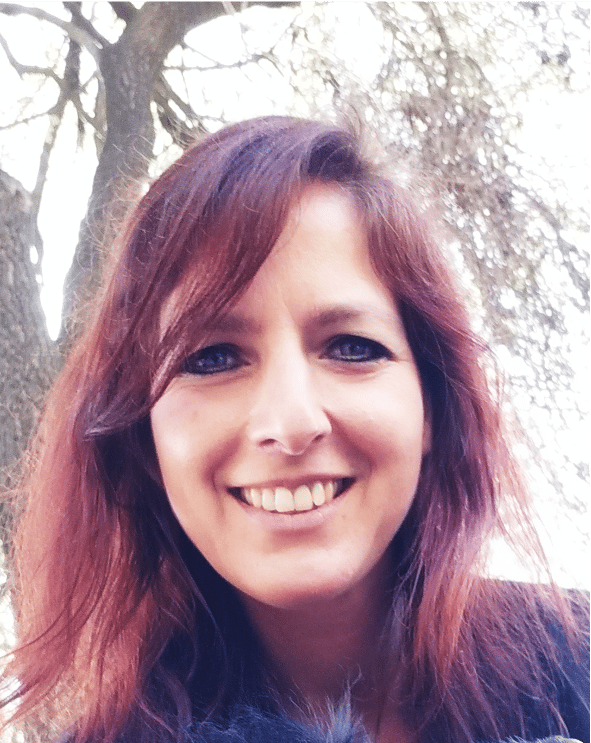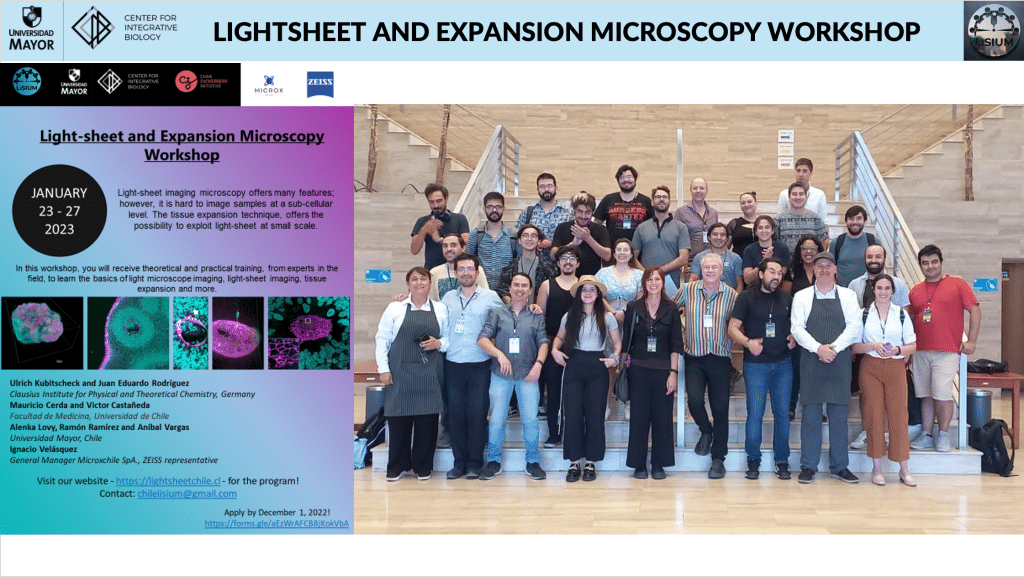Enhancing Global Access: interview with CZI grantee Alenka Lovy
Posted by Mariana De Niz, on 24 January 2024

DEVELOPING A LATIN AMERICAN LIGHT-SHEET BIOIMAGING HUB
Alenka Lovy is a principal investigator at Universidad Mayor in Chile. She is also the leader of LiSIUM (the Light Sheet Imaging Unit at Universidad Mayor). Her CZI project aims to connect multiple labs in the region, including institutions in Chile, Brazil, and Uruguay, to implement light sheet at a larger scale. Through LiSIUM, Alenka and her colleagues will implement multi-pronged strategies to expand access, including innovative services to image samples, organization of international workshops, training, and outreach. A strong focus of LiSIUM will be on education, to have a longer-lasting impact in a new generation of researchers.
What was the inspiration for your project? How did your idea for the CZI project arise?
I think sharing our light sheet was the inspiration, because we found that the speedy acquisition was of this technology was very exciting. Realizing that it was the only light sheet in a very large area, it made sense to apply to the CZI funding because in general there’s no support for the networking kind of work that CZI is encouraging. I think CZI’s role in all of this has been monumental because it brings light to how much the researchers need to invest in networking and in accessibility. I think once we saw the call, we realized it was a perfect fit.
How did you first hear about the CZI call?
The director of our center was receiving notifications of the RFAs for CZI and re-directed this to us.
What are the main challenges that you have experienced since you began with the initiative?
Regarding challenges, since I’m new to the country, that’s a big barrier for me. Learning how to disseminate information here has been very different from how it was done in Boston, where you contact a department and they disseminate to many people. Here you need to know the right people who like to disseminate information. I just try to contact as many people as I can. I spend a lot of time researching what people do and contact them personally to see if this technology is relevant to them, but that can be a full time job, so I need to put a limit. Another challenge we’ve had is dealing with large data: we have this awesome machine and no infrastructure to support the data. We have no server and are working to obtain one . through instrumentation grants within the country. Without proper capability to store and analyze these large data, we cannot utilize the instrument to its full potential. This will be essential in order to work with researchers nationally as well as internationally. We need to be able to acquire and store terabyte-sized data, and move it for analysis. Without this, it’s like driving a Ferrari on a bike path.

Have you found it challenging to do all the work you’re doing in a culture that is new to you?
It’s been very hard many times. I sometimes think ‘oh if only I could express myself clearly, it would be so much easier’. Although I have learned to understand Spanish, to speak it is still difficult for me. Luckily a lot of people understand English. I often ask people to please speak Spanish, so that they can express themselves comfortably but I might respond in English because it’s more natural for me.
You’re doing a great job! At a regional level, you have collaborations with many countries in the region: Brazil, Uruguay, Argentina, Chile. I imagine that’s one of your greatest successes?
The international collaborative aspect has been great, and I think this has mostly been due to CZI. They’re so supportive of building communities and supporting connections. It really has worked out. I love attending all of the CZI meetings, as well as meetings supported by CZI such as the LABIxBINA meeting in Mexico last year, a wonderful experience! I’ve met many of the people I now work with at these meetings. CZI is making a huge impact and I think other funding agencies should follow, and support this type of vision.
Based on this, what would you say is the unique value and impact of the CZI program?
The CZI program is funding wonderful imaging science and developments in imaging, in addition to being great at supporting the community they have funded. Once you build the community, there can be a long-lasting impact. It paves the way to continue to develop and invest within that community.

How much of what you’ve accomplished with CZI support would have been possible without this support?
This is an interesting question, because I don’t know how much energy I would have put into networking if I had not been encouraged by the CZI funding. Although it would be possible to accomplish, due to the highly collaborative environment in Chile, it would likely be slower. Research collaborations are already happening, but with new technologies, people have less time to put toward networking, and that slows it down. I do feel CZI has definitely catalyzed the process of technology dissemination and therefore accessibility.
Along a similar theme, in what ways do you feel your project has democratized microscopy?
I think establishing Flamingo microscopes in the region, which are portable and more affordable will help in democratizing light-sheet microscopy. The reason I’m so into working on the Flamingo microscope as opposed to other open source systems is that it’s very modular and streamlined.. The idea is that you don’t need to be a physicist to operate it. Hopefully, being a very excited microscopist/biologist, with a willingness to learn will be enough to get it established in our region We rely on our collaboration with Jan Huisken and Michael Weber to get the know about the operation of the Flamingo. We then plan to train core facility members to be able to accept the Flamingo in their facilities rather than training individual users all the time because there is only so much we can handle.
In general, you’ve organized several workshops already. You mentioned advertising can be challenging because there’s no department to do it. What else do you think we can do through LABI or other organizations to help disseminate information?
I think that through LABI newsletters and the MicroscopyDB website we will be able to reach many interested researchers. What I’ve been thinking about is that in addition to organizing workshop for specific dates, we can do it the other way around: put flyers advertising ‘contact us, bring your lab group and let’s work together, let’s do clarity, let’s do expansion, let’s work on the light sheet’. I think doing a more personalized approach and targeting to labs who, from their publications, you can clearly see would benefit from this technology, is another important approach. Through LABI and MicroscopyDB I’d like to advertise permanently ‘this is what we do, come see us at your convenience, let’s plan a time’.

What new things have you learned every time you have held these workshops already? Was there something you were surprised about?
Running out of time in the workshop always happens. I also learned you can’t expect to get results for a new experiment in this setting unless you get super lucky. However, surprisingly, we’ve gotten quite close and just needed to plan extra imaging time. Lots of credit goes to the people that are so interested and take the time to prepare their samples to the best capability. They have put a lot of effort in sample preparation by the time they come to image. That’s another reason for doing these personalized workshops – it allows everyone to dedicate more time and attention to each sample. We have seen that imaging with 10 groups is not exactly feasible. Even though the actual imaging is super-fast, setting everything up to be perfect is the time-consuming part. But that’s something I feel we can fix with the other way of running the workshops.
I also feel we have a lot of work to do to adopt other techniques, so we can be enlightening to others. We did an expansion workshop and it was awesome. But because we were the organizers, we couldn’t go through the steps ourselves to learn from the experts that we invited. When the experts in expansion microscopy left and people came to us asking if they could follow up on expansion, we realized how important are the connections we have made through the workshop. This allows us a way to follow up on troubleshooting problems, and developing new approaches. Without these connections it would be much more difficult. To implement a technique is demanding on time, and without the CZI funding, it would be close to impossible.
Check out our introductory post, with links to the other interviews here


 (No Ratings Yet)
(No Ratings Yet)